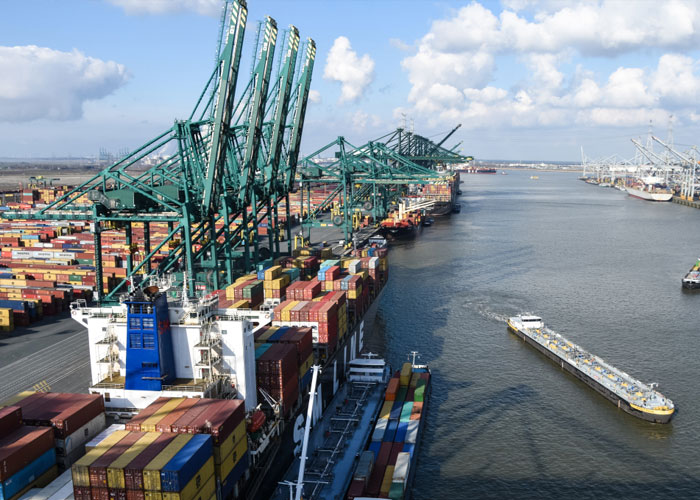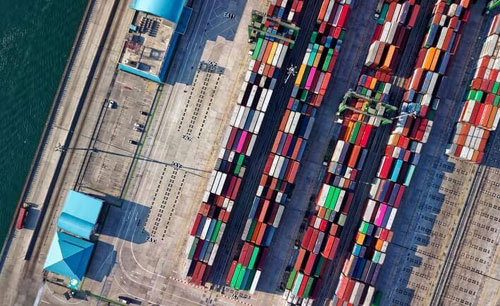We all know that transport is a big consumer of energy. It consumes most of the world's oil and fuel and contributes to air pollution, including particulates and nitrous oxides. Furthermore, transport contributes to global warming by emitting carbon dioxide. This article will focus on the environmental and economic impact of transport.
Depending on the location of your home, you might have to purchase an STP to handle your sewage. Generally, residential buildings need at least one STP to treat sewage. Many STPs are located underground, making them difficult to maintain. Moreover, you may not be able to inspect them without hiring an expert. It is better to consult a professional if you have any doubts about the process.
Impact of climate change on transportation
Climate change is having an impact on transportation systems. The transportation system consumes up to 93% of the nation's energy and contributes to greenhouse gas emissions. In 2010, the U.S. transportation sector accounted for 27% of the nation's total emissions, and cars and trucks accounted for 65% of those emissions. This means that the policies aimed at reducing emissions will have an impact on the various components of the transportation system.
Several studies have shown that climate change is changing the transportation system. Peterson's 2008 study, for instance, included a thorough assessment of the transportation system of major U.S. metro areas with advanced transportation systems. However, the current study aims to provide a more recent analysis and better foresee climate change's human impact on transportation.

The impact of climate change on transportation systems is expected to be extensive. The impacts of sea level rise and extreme weather patterns will cause major disruptions to transportation systems. Roads and railways will also need to be relocated or modified. The severity and frequency of storms and heat waves will make travel more difficult and costly.
Impact of transport networks on the environment

The development of transport systems has a profound impact on the environment. They create pollution, contribute to climate change, and affect ecosystems. They account for 64% of global oil, 27% of energy, and 23% of CO2 emissions. In addition, vehicular pollution causes 185,000 deaths every year, and it is estimated that up to 50 million people will be injured on the world's roads. In addition, transport systems are at the centre of many economic and social development challenges. Therefore, it is important to think about sustainable transportation strategies.
The impacts of transportation systems are complex, and the causes and effects are not always clearly understood. Transportation is one of the most significant contributors to global CO2 emissions, and this contribution is increasing. The transportation sector accounts for almost 25% of global emissions in the most advanced economies. With a growing population and a transition to high-speed modes, the effects on the environment are likely to increase.
The direct effects of transportation on the environment include damage to aquatic and terrestrial ecosystems. For example, coastal transport facilities have a profound impact on soil erosion. These activities also alter the scale and scope of wave action. Oil spills can damage coastal areas.
Impact of transport infrastructure on productivity
Although the impact of transportation infrastructure on productivity is not always clearly understood, it is of importance to the overall growth of an economy. Research on this topic can help policymakers develop appropriate transport planning strategies. But it is important to make sure that these plans are sustainable, as this can help protect local ecosystems.
The economic effects of transport infrastructure are spatial, meaning they do not simply affect the area near the transport network. It also impacts the region and neighbourhood surrounding it. For instance, a large city close to a rail line is likely to see higher productivity. A small town that is further away will experience lower economic growth.
Investment in transport infrastructure can, directly and indirectly, affect a country's productivity. It can increase the number of jobs in some sectors and lower the costs in others. However, some industries are more influenced by transportation infrastructure than others. In addition, highways improve access to large urban centres, which may increase the attractiveness of a metropolitan area.
Impact of transport on economic growth
Transportation infrastructure investments can improve economic growth by reducing the cost of moving goods and people. Such projects can also boost economic productivity, which measures the goods produced for every dollar invested. In turn, increased productivity leads to higher living standards. Productivity is one of the key drivers of economic growth, so it's critical that policymakers consider it when evaluating the value of their transportation expenditures. Investments that increase productivity can reduce congestion, improve connectivity, and improve the economic well-being of citizens.
Developing and maintaining transportation infrastructure is a complex process, and there are many components to this complex network. These include vehicles, infrastructure, and operating systems. While it may seem difficult to define the components of transport infrastructure, it's essential to understand what drives their importance to society. In addition to providing the transportation people need to get around, these infrastructures often contribute to a country's social, economic, and environmental well-being.
There's a general assumption that transport activity is correlated with GDP growth. The fact that it can connect different stages of production is an important factor. Speedy transportation modes also allow producers to reach many markets. This leads to significant economies of scale







































Share Post